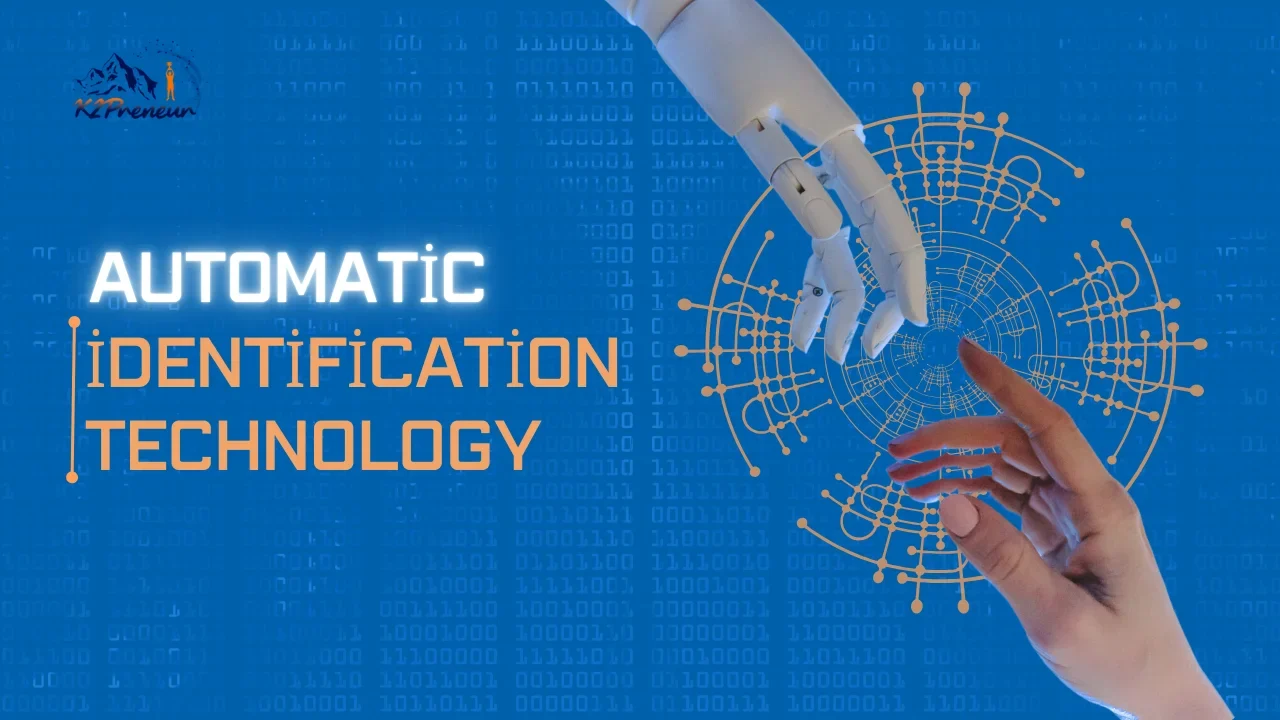Stay away from automatic identification technology copy portrayals to keep up with website improvement (Web optimization). Momentarily refers to innovations like RFID, biometrics, or QR codes integral to AIT. It ought to line up with what clients are looking for, for example, “effective global positioning frameworks.” Incorporates a source of inspiration (CTA), like “Find out more” or “Find arrangements.” Abusing watchwords is punished in search rankings. Character Breaking point Consistence: Guarantees the portrayal doesn’t shorten in list items.
“Investigate Programmed Distinguishing proof Innovation arrangements, including RFID, standardized identification frameworks, and biometrics, intended for effective following and information precision. Learn all the more today. These titles feature key areas of Programmed Recognizable Proof Innovation (AIT), offering an extensive comprehension of its job and importance.
End-User Automatic Identification Technology Examples
The method and innovation of automatic identification technology examples used to consequently recognize and validate clients of a framework or administration is known as the Programmed ID Innovation of End-Clients.
Various methods, including biometric acknowledgment, AI calculations, and client conduct investigation, are habitually used to work with this recognizable proof. Working on client access while further developing security and client experience is the principal objective.
Biometric frameworks recognize individuals by utilizing unmistakable natural attributes like fingerprints, facial acknowledgment, or iris checks. By wiping out the requirement for passwords and human ID techniques, these frameworks give a serious level of safety and straightforwardness.
Uses complex calculations to inspect client patterns and activities. These frameworks can progressively foresee and approve client IDs with more prominent exactness by gaining from client connections.
Applications In Automated Identifications Technology
Computerized ID Innovation (AIT) is generally applied across different ventures to further develop proficiency and precision. In operations and store networks, the board, RFID labels, and standardized tags empower constant following of merchandise, guaranteeing smooth stock administration and conveyance. In medical care, AIT is utilized for patient recognizable proof, following clinical hardware, and overseeing records to upgrade patient wellbeing. The retail area depends on standardized identifications and QR codes for effective checkout processes, stock control, and client commitment. In security and access control, biometric frameworks like unique finger impressions and facial acknowledgment guarantee secure ID and limited admittance. Moreover, in assembling, AIT smoothes out creation lines and screens resources, lessening blunders and working on functional productivity.
What is Automatic Technology Identification?
Programmed Innovation ID of automatic technology identification alludes to a bunch of advancements used to naturally recognize, gather, and cycle information without human intercession. It assumes an essential part in smoothing out tasks by empowering speedy and precise information catch. Normal instances of AIT examples incorporate scanner tags, QR codes, Radio Recurrence Recognizable proof (RFID), and biometric frameworks like unique marks and facial acknowledgment. These advances are generally utilized in businesses like assembling, strategies, medical care, and retail for assignments like stock administration, following resources, and improving security. By lessening mistakes, further developing productivity, and saving time, Programmed Recognizable proof Innovation has turned into a foundation for present-day organizations looking for computerization and precision in information handling.
Automatic Identification Technology Examples
Programmed Distinguishing Proof Innovation (AIT) incorporates different devices and frameworks that smooth out information catch and ID processes. One normal model is Standardized identification Innovation, which utilizations printed scanner tags checked by optical gadgets to recognize items and oversee stock proficiently. Another generally utilized framework is Radio Recurrence Distinguishing Proof (RFID), which utilizes electromagnetic fields to follow things through labels and peruses, empowering ongoing checking in supply chains. Biometric Frameworks, for example, unique finger impression examining and facial acknowledgment, are instances of AIT utilized for security and personality checks. Fast Reaction (QR) Codes are one more famous model, permitting clients to rapidly get to data by filtering the codes with a cell phone. These innovations assume a significant part in further developing exactness, diminishing manual mistakes, and upgrading productivity across ventures like retail, medical services, operations, and security.
Automatic Identification Technology’s Applications and Advantages
There are as follows:
Programmed Recognizable Proof Innovation (AIT) is generally utilized across different ventures to smooth out activities, further develop precision, and save time. In strategies and stores network the board, advances like standardized identifications and RFID frameworks empower continuous following of products, decreasing mistakes and guaranteeing convenient conveyances. In medical care, AIT oversees patient records, tracks clinical gear, and upgrades wellbeing through precise recognizable proof frameworks. Retail ventures use standardized tags and QR codes for stock administration, further developing proficiency at checkout counters. The security area benefits from biometric frameworks, like unique marks and facial acknowledgment, for character checks and access control. In general, Automatic identification technology lessens manual blunders, increments functional productivity, upgrades information exactness, and advances robotization, making it a fundamental device in current organizations and associations.
Automated Technology Identification’s Features and Cons
Programmed Recognizable Proof Innovation (AIT) offers highlights like fast information catch, further developed exactness, and consistent computerization, making it profoundly proficient for businesses like coordinated factors, medical care, and retail. Innovations, for example, standardized tags, RFID, and biometrics, smooth out tasks and diminish human mediation. Be that as it may, AIT likewise has disadvantages, for example, high execution costs, similarity issues with existing frameworks, and potential information security gambles, particularly with biometric information. Moreover, advances like RFID might confront obstruction or read blunders in complex conditions. Regardless of these difficulties, AIT’s elements, including velocity, accuracy, and adaptability, keep on driving its reception across enterprises.
Functions Of Automated Technology Identification
Robotized ID Innovation (ATI) assumes a basic part in further developing information for executives, precision, and functional proficiency across businesses. Its essential capability is to catch and handle information with negligible human mediation, decreasing manual mistakes and saving time consequently. Innovations like scanner tags and QR codes improve stock following, item ID, and retail checkout processes. In RFID frameworks, information is gathered progressively through radio recurrence signals, empowering consistent resource following and production network the executives. Biometric frameworks, for example, finger impression checking and facial acknowledgment, upgrade security by confirming characters rapidly and precisely. One more significant capability of AIT is guaranteeing information exactness and dependability, which is critical for business information like medical care, where patient distinguishing proof and clinical gear following are fundamental. AIT likewise upholds computerization by smoothing out work processes and incorporating them with existing frameworks to enhance efficiency. By further developing rate, precision, and proficiency, AIT has turned into a fundamental apparatus in areas like coordinated factors, assembling, medical services, and security, changing how organizations work.
Final Thoughts
Robotized Recognizable Proof Innovation (AIT) has altered how information is caught, handled, and overseen across different businesses. Via mechanizing undertakings that once required critical human exertion, Automatic Identification Technology has further developed proficiency, exactness, and efficiency in areas like operations, medical services, retail, and security. Advances, for example, standardized tags, RFID, and biometrics, have become fundamental apparatuses for following, ID, and resource the executives. While AIT offers various advantages, including diminished mistakes and quicker handling, it likewise presents difficulties, for example, execution expenses and information security concerns. Notwithstanding these restrictions, the developing requirement for computerization and accuracy in an advanced world keeps on driving the reception of AIT. As headways in innovation progress, AIT will assume a significantly larger part in forming more astute, quicker, and more solid frameworks. In general, Computerized Recognizable Proof Innovation is a foundation of present-day tasks, improving organizations’ capacity to fulfill the needs of an undeniably associated and robotized world.
FAQ’s
What is Mechanized Distinguishing Proof Innovation (AIT)?
Mechanized Distinguishing Proof Innovation (AIT) alludes to a scope of innovations, for example, standardized tags, RFID, QR codes, and biometric frameworks, that consequently recognize, gather, and cycle information without human mediation. It is broadly utilized for following, stock administration, and personality confirmation across businesses.
What Are the Principal Advantages of Computerized Recognizable Proof Innovation?
The critical advantages of AIT incorporate better information exactness, decreased manual blunders, quicker handling times, and expanded functional productivity. It smoothes out work processes in businesses like coordinated factors, medical services, retail, and security.
What Are the Difficulties of Utilizing Computerized Distinguishing Proof Innovation?
A few difficulties of AIT examples incorporate high execution costs, similarity issues with heritage frameworks, and worries about information protection and security, particularly in biometric applications. Also, advancements like RFID can confront impedance in specific conditions.






